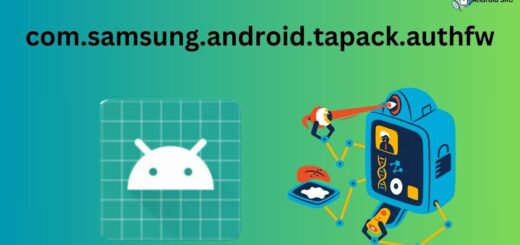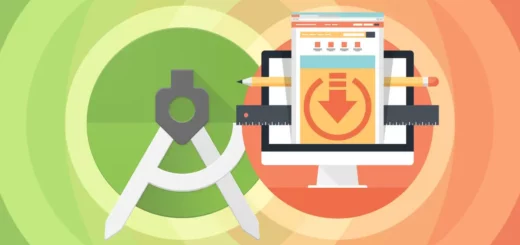Android Loopers and Handlers – Detailed explanation
Today we will like to give a short introduction to two nice classes – Looper and Handler. They are used in Android UI internally, and available to us developers so we can do some cool things with their help. The most basic use of these components will be in inter thread communication.
So what can you do with Loopers and Handlers? Basically, they implement a common concurrency pattern that I call the Pipeline Thread. Here’s how it works:
- The Pipeline Thread holds a queue of tasks which are just some units of work that can be executed or processed.
- Other threads can safely push new tasks into the Pipeline Thread’s queue at any time.
- The Pipeline Thread processes the queued tasks one after another. If there are no tasks queued, it blocks until a task appears in the queue.
- Sometimes tasks can called messages and other names.
This architecture has some valuable traits and is widely used in frameworks and applications on different platforms.
In next post, we are going to build a simple app that emulates a queue of background downloads while showing its status in the UI. It will be based on a Pipeline Thread that we will build using Looper and Handler.
Follow this link for detailed code tutorial.
But before we start, let’s discuss the Pipeline Thread for some more time and see how Looper and Handler implement it.
Usages of the Pipeline Thread
The most prominent usage of Pipeline Thread is found within almost any UI framework, including Swing (remember the event-dispatching thread?), SWT, Adobe Flex and, of course, Android Activities. The Pipeline Thread pattern is used to process UI events (such as button clicks, mouse movement, orientation changes, screen redraw and so on). This allows you to change a button caption without having to worry that the user will click the button at the same moment.
On the other hand, this forces you to only do quick operations in the UI thread – any developer knows what happens if you try to download a file right there in a button onClick handler. In our app we will overcome that by adding another Pipeline Thread and pushing long-lasting operations (in our case, the downloads) to it so that the UI thread can run free.
Other common usages of the Pipeline Thread pattern:
- Executing requests to a remote service (usually you want to do them one by one and sequentially)
- Uploading images to an HTTP service
- Resizing and processing images
- Downloading stuff, just like we’re going to do in our app
In general, using a Pipeline Thread rather than launching another thread for each background operation allows you to control the load and order (almost like law and order) of your background jobs. Also, you can have multiple Pipeline Threads and use them as a pool so you will have both the ability to execute multiple operations at once and keep the load under control.
In our example, we only want to allow one download at a time and we want downloads to execute in the order they were scheduled. Exactly the case to use a Pipeline Thread.
Looping and Handling
Looper is a class that turns a thread into a Pipeline Thread and Handler gives you a mechanism to push tasks into it from any other threads.
The Looper is named so because it implements the loop – takes the next task, executes it, then takes the next one and so on. The Handler is called a handler because someone could not invent a better name.
Here’s what you should put into a Thread‘s run() method to turn it into a Pipeline Thread and to create a Handler so that other threads can assign tasks to it:
|
1 2 3 4 5 6 7 8 9 10 11 12 13 14 15 16 17 18 19 20 21 |
@Override public void run() { try { // preparing a looper on current thread // the current thread is being detected implicitly Looper.prepare(); // now, the handler will automatically bind to the // Looper that is attached to the current thread // You don't need to specify the Looper explicitly handler = new Handler(); // After the following line the thread will start // running the message loop and will not normally // exit the loop unless a problem happens or you // quit() the looper (see below) Looper.loop(); } catch (Throwable t) { Log.e(TAG, "halted due to an error", t); } } |
After that, you can just pass the handler to any other thread. It has a thread-safe interface that includes many operations, but the most straightforward ones arepostMessage() and its relatives.
For example, imagine another thread has a reference to the handler that was created in our Pipeline Thread. Here’s how that other thread can schedule an operation to be executed in the Pipeline Thread:
|
1 2 3 4 5 6 |
handler.post(new Runnable() { @Override public void run() { // this will be done in the Pipeline Thread } }); |
In our case, we will use this idiom to schedule download tasks to be performed (on the download pipeline thread) when the user clicks a button (which is handled on the UI thread). We will also use it the other way around – when the download thread notifies the activity that a download has completed (on the download thread), the activity will use a Handler that is attached to the UI thread to make sure that we update the UI on the UI thread only (which is a requirement of Android UI).
By the way, the UI thread has a Looper created for it implicitly, so you can just create a Handler in activity’s onCreate() and it will work fine:
|
1 2 3 4 5 6 7 8 9 |
@Override public void onCreate(Bundle savedInstanceState) { super.onCreate(savedInstanceState); setContentView(R.layout.main); // Create the Handler. It will implicitly bind to the Looper // that is internally created for this thread (since it is the UI thread) handler = new Handler(); } |
Implementation Details
If you understood the idea of Looper and Handler, the rest is details. Basically, I created a DownloadTask class that emulates a download task of a random duration. I did not want to do actual downloads because I didn’t want to eat your data plans, but it’s straightforward to change this into real work. Then, the DownloadThread has an interface that allows to enqueue DownloadTask instances and also to request it to exit gracefully. There is also the DownloadThreadListener interface that allows the download thread to notify some other entity about status updates. In our case, that interface will be implemented by the DownloadQueueActivity because we want to reflect the download progress in the UI.
At this point, however, we need to use another Handler – the one that is attached to the UI thread. The DownloadThreadListener is notified by the DownloadThread from the download thread itself, but the action we want to take (updating the progressbar and the textview) needs to be done from the UI thread. Therefore we use the UI handler like this:
|
1 2 3 4 5 6 7 8 9 10 11 12 |
// note! this might be called from another thread @Override public void handleDownloadThreadUpdate() { // we want to modify the progress bar so we need to do it from the UI thread // how can we make sure the code runs in the UI thread? use the handler! handler.post(new Runnable() { @Override public void run() { // update the UI etc. } }); } |
Note: In case of doubt, it’s also OK to call a handler from its own thread.
Full code tutorial is covered in next post. Please comment and share.



